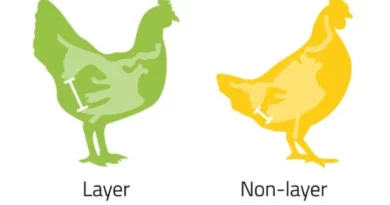Classification of Feed Ingredients in Poultry Feed Production
In discussing the many ingredients which may be useful in poultry diets/rations, it seems logical to group them based on the nutrients which they contain. The classification used here will be:
1. Carbohydrates
Carbohydrates which are the major source of energy in poultry diets include:

The grains – maize, guinea corn, millet, wheat, and broken rice. Cereal by-products – maize bran or offal, wheat bran or offal, rice bran or offal, and guinea-corn offal.
Starch roots and tubers – cassava flour, cassava chips, and sweet potato. The dietary inclusion of 30–60% of these energy sources into the poultry diet is recommended with the upper limits mainly for young growing animals.
2. Protein
Commonly used, protein feed ingredients for poultry ration formulation and feeding include the following:
Vegetable/plant sources such as groundnut cake, soya bean cake, full-fat soybean, cotton seed cake, and palm kernel cake.
Animal protein sources such as fish meal, meat and bone meal, and blood meal.
Read More: Feeds and Feedings in Poultry Production
3. Fats
Considerable quantities of fats are used in poultry feeding, primarily as a potent source of energy. Fats normally contain two to three times as much metabolize energy per unit of weight as grains.
Major sources available are vegetable oil (palm oil, groundnut oil, soybean oil), hard fat, soft fat, and hydrolyzed animal fat.
The usual practical limit for adding fats is 3 to 5 percent of the diet, although with special techniques pelleted diets may contain as high as 7 or 8 percent added fat. Rations very high in fat tend to cake and do not flow readily.
4. Minerals
Sources of the major minerals for poultry rations include bone meal, limestone, oyster shell, DI-calcium phosphate, DE-fluorinated phosphate, common salt, and trace mineral premixes.
Read More: Factors Influencing Successful Hatchery Operations
5. Vitamins
The vitamins are commercially available in pure form or as vitamin concentrate at a relatively low cost. They can be added to a poultry feed by means of a premix which supplies specified amounts of each vitamin.
Certain ingredients available for poultry feeding are potent sources of vitamins. These include yeast, fat solubles, distillers’ solubles, liver meal, alfalfa meal, and milk by-products. All the fat-soluble vitamins (A, D, E, and K) are supplied by fats and oils.
6. Water
Some water is available in the feed itself (metabolic water), but the bulk of it must be separately provided in drinking cans. Cool, clean water should be provided at all times. The water should be free from excess salt which might have a laxative effect.
Read Also: Importance and Benefits of Smart Farming









